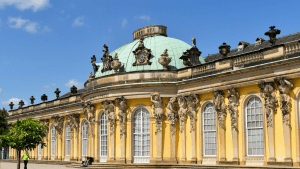A Brief History of Berlin
Berlin has a rich and complex history giving it its unique character. Starting in the 13th century as a small trading post, Berlin quickly grew into an important hub for trade and culture. In the 19th century, Berlin became an industrial giant and the core of the German Empire. This era of rapid growth turned it into a bustling city. However, the 20th century brought significant changes. After World War I, Berlin faced political and economic struggles, which led to the rise of the Nazi regime.
World War II left Berlin in ruins, and in 1945, it became a central point of the Cold War. The city was split into East and West Berlin, divided by the Berlin Wall built in 1961. This wall symbolised the larger conflict between the Soviet Union and the Western Allies. For nearly thirty years, the Wall stood as a stark reminder of ideological differences.
The fall of the Berlin Wall in 1989 marked a new beginning, leading to the reunification of Germany in 1990. Since then, Berlin has thrived as a global city known for its vibrant culture, historical sites, and dynamic art scene. Visitors can explore traces of its divided past, like the East Side Gallery and Checkpoint Charlie, while enjoying a city that constantly reinvents itself, blending its rich history with a modern, cosmopolitan feel.

